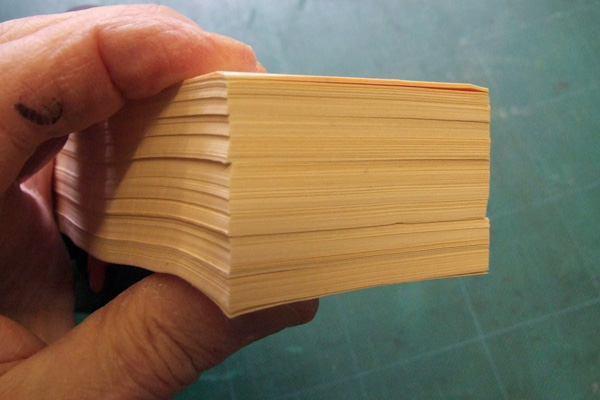
Line up the sheets
This is a bookcraft technique in which glue is applied to the edge of every sheet of paper to make the hinge of a book. The area over which the glue can take hold is very small, and the binding is likely to separate under even light usage. It is not a satisfactory binding where permanence is important. It used frequently for making padded notebooks, and the name padding is often used to describe this quick and easy method.


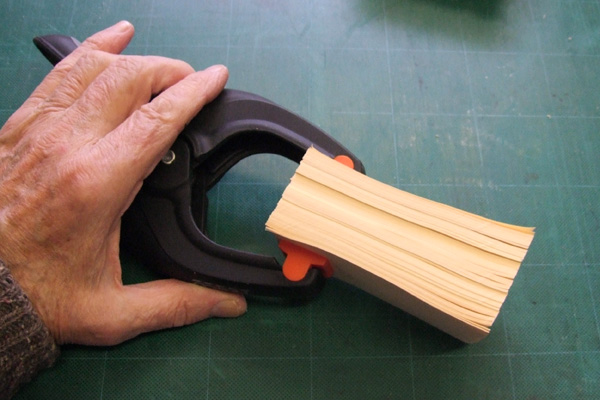
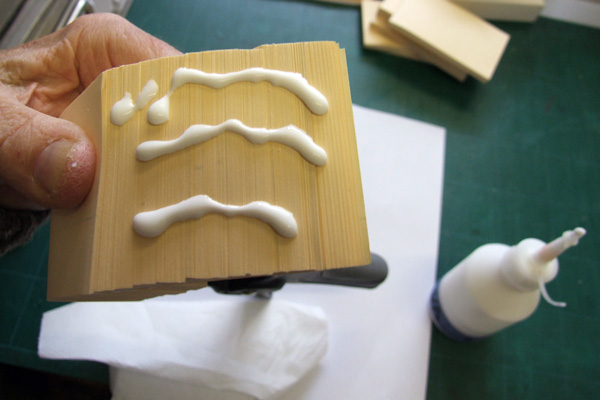
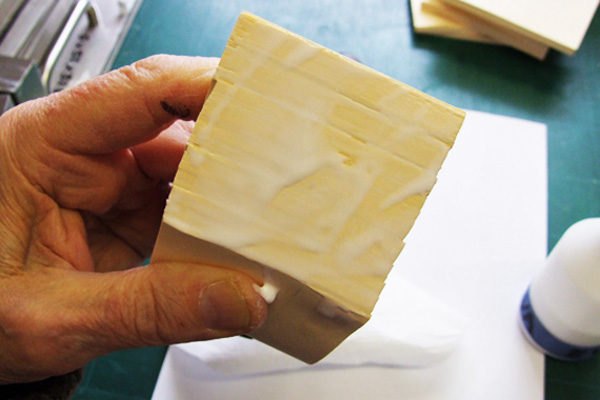

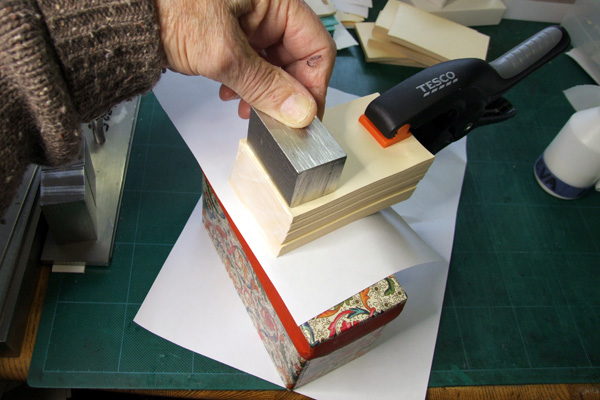

For more permanence the glue can be spread both over the edge of each sheet, and also a little way into the sheet. This is done by "Single Fan" binding [116119] ~ or (for an even more permanent bond) by spreading glue over a narrow strip of both sides of each sheet, by using a "Double Fan" binding [116087] ~ or by mechanically abrading the edges of the page to allow the glue to penetrate into the sheet (castellating) ~ or by making grooves into which thread or string is glued. (Using a mix of invented and traditional terminology this could be called 'glued-on-strings' rather than 'sewn-on-strings'.)
Further variants of this include hot-melt gluing in which the softness of heated glue enables it to penetrate the fibres of the sheets.
It is normal when making several such pads or books to glue them all at once. After drying the indivdual items are separated out using a long bladed knife. We have an illustrated version of this process [112990] .
